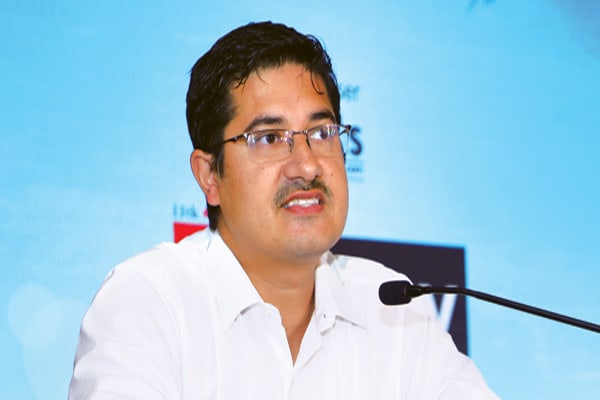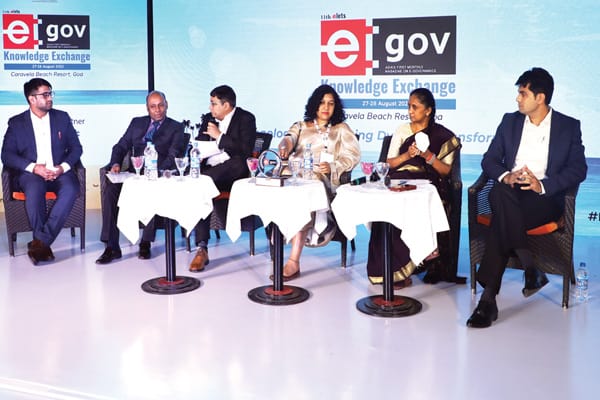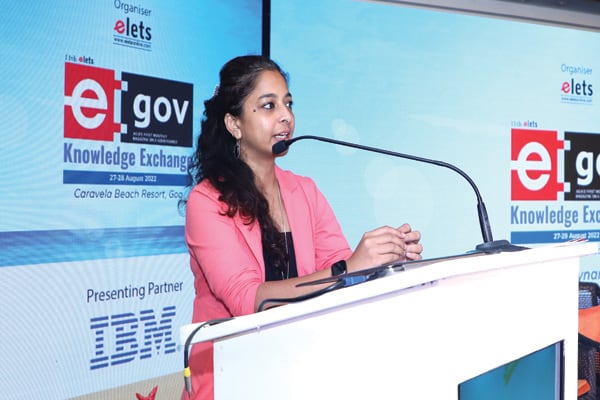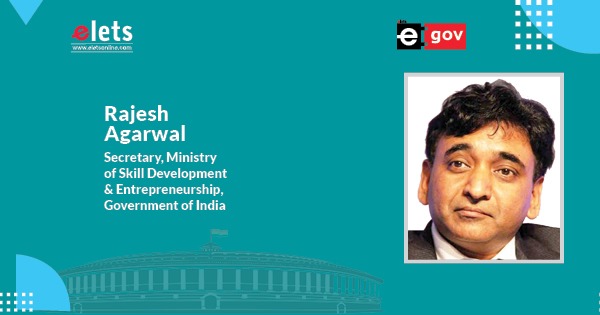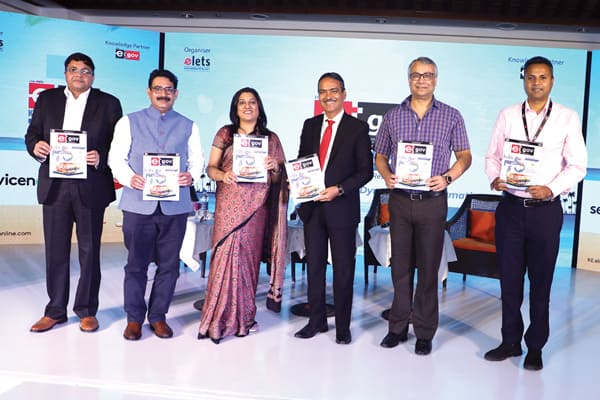
Elets Technomedia and eGovernance magazine organised the 11th edition of ‘Knowledge Exchange Summit’ on August 28, in Goa, on the theme ‘Technology Accelerating Dynamic Transformation’. The summit was aimed at encouraging and celebrating cutting-edge innovations transforming governance in today’s fast-paced digital era. Presented by IBM, with the support of National e-Governance Division (NeGD), Ministry of Electronics and Information Technology (MeitY), Government of India and Digital India, the conference saw a robust participation from senior policymakers from the Centre as well as state governments and industry experts.
The IT Industry has been instrumental in transforming the whole Indian economic and governance landscape. Highlighting this, O P Gupta, Principal Secretary (Expenditure), Finance Department, Government of Maharashtra; Baldeo Purushartha, Joint Secretary, Department of Economic Affairs, Ministry of Finance, Government of India; Sumnesh Joshi, Deputy Director General, Unique Identification Authority of India (UIDAI) and Lalit Jain, Director, Department of Environment, Science & Technology and Member Secretary, HIMCOSTE , Government of Himachal Pradesh spoke at the Knowledge Exchange Summit, Goa.

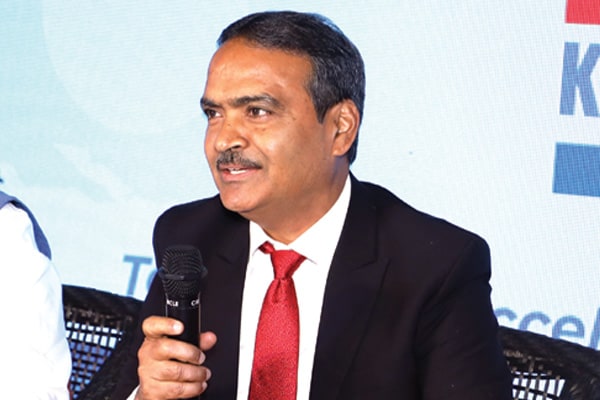
O P Gupta, Principal Secretary (Expenditure), Finance Department, Government of Maharashtra
Talking about the IT- enabled intervention in the financial sector, O P Gupta, Principal Secretary (Expenditure), Finance Department, Government of Maharashtra, said “Maharashtra, today, does not really have paper stamps for high value transactions. Till now, you were supposed to pay through the bank, but now you can pay online and get the stamp delivered to you, which is verified.” He said that the whole process has taken a few years, but that was the initial step, which according to him, was the IT-enabled intervention in the financial sector.

Talking about India’s growth and development, he said, “India, in a way, is probably one of the few economies who has moved from agriculture to service sector in a transformative way When we got independent 75 years back, our major part was agriculture and today, our service sector probably provides around 50 to 60 per cent of our GDP. Rather than going with a three-step process from agriculture to manufacturing and then to the service sector, India has gone directly from agriculture to the service sector.”

Highlighting employment opportunities for the youth, Gupta said that the government’s main focus is to make sure that the young generation gets enough gainful employment and help take India to the developed stage. Prime Minister Narendra Modi had also said that Information Technology plus Indian talent is India Tomorrow.

Talking about IT and its impact, Gupta gave an example of the kind of social unrest IT may bring in future. “When I was incharge of the state electricity distribution company, we talked about introducing smart metres. These metres are chip-based and you just drive a vehicle around and it takes the reading from all the buildings, so you don’t really need a metre reader. Our second option is that the owner himself just takes a photo and uploads it. Now this creates a problem. The employees who have been doing metre reading work become jobless. How do you retrain and re-employ them?”
Gupta concluded by posing three major questions- “How do we tackle the social unrest. How do we make sure that the people who are getting jobless or losing work are retrained and re-employed and what are the things we are doing today, which will remain relevant in 10 years 20 years down the line?”
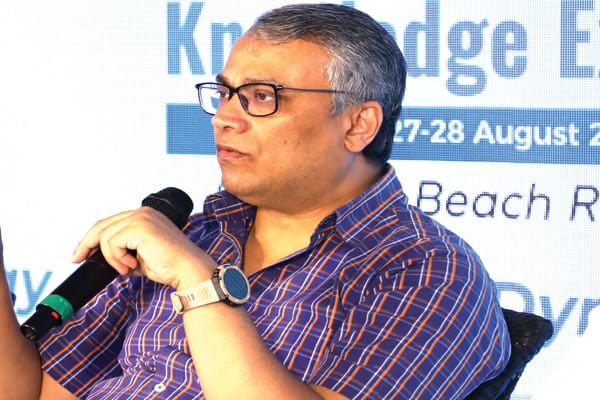
Baldeo Purushartha, Joint Secretary, Department of Economic Affairs, Ministry of Finance, Government of India
Talking about technology, Baldeo Purushartha, Joint Secretary, Department of Economic Affairs, Ministry of Finance, Government of India, said, “We have done quite well but there are still miles to go. Technology is a very dynamic process, it never ends. It always keeps reinventing and developing itself. So, we have to be on our toes and find out the newer ways, because one of the problems of technology is that it is also a tool of exploitation.”
“So, whoever controls the technology is in a position to exploit other countries and Indian experience is that we have been exploited by developed countries in terms of technology in many areas,” he added. Purushartha said that the pace of technological change will make almost 99 per cent things irrelevant. “Would there be a requirement for a self-owned car? There are driverless cars, you can just summon a car and go,” he said.
“Technology is a very dynamic process. It keeps reinventing itself. So, we have to be on our toes and find out the newer ways, because one of the problems of technology is that it is also a tool of exploitation. — Baldeo Purushartha”
“The way AI and machine learning is developing, 50 per cent of US calls of booking, asking for a service or purchasing anything is answered not through a human being, but through AI. So, half of the job is gone. These are part and parcel of technological development,” he further said.
Talking about what the future would be, Purushartha said that “the general understanding is that within next 10-15 years, a real conscious AI would be in place, an AI having self-awareness. And if a self-aware AI is there, then there is no difference between a human being and AI,” he said.
He said that video conferencing technology was hardly of any use before the pandemic. But now, with the pandemic, everyone is doing VC. “In government also, we used to do VC three or four times a day,” he said. “Five to seven years from now, I doubt if we will require travel from one place to another to conduct meetings. We can have a virtual meetings with the same kind of sensation and feeling which we have today, in a holographic simulation,” he concluded.
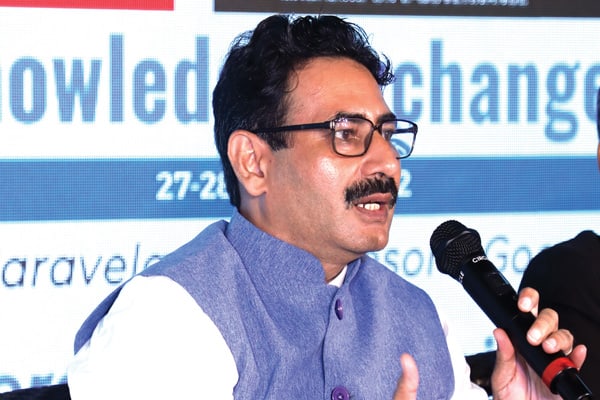
Sumnesh Joshi, Deputy Director General, Unique Identification Authority of India (UIDAI)
Talking about Aadhaar, Sumnesh Joshi, Deputy Director General, Unique Identification Authority of India (UIDAI) said, “Direct Benefit Transfer (DBT) using Aadhaar has really made a difference in our country. We have saved Rs 2.2 lakh crore of subsidy (estimated by DBT Mission under Cabinet Secretariat) under DBT using Aadhaar.”
“We have to reach the poorest of the poor. Earlier, in the absence of identity and the cost of acquisition or giving a service in the rural area was very high, now with an IT system in place, and using Aadhaar as a Know- Your-Customer (KYC), people are reaching and giving the services on the ground.”
Financial transactions require a bank account. “Earlier, many people did not have a bank account, but due to Aadhaar as a KYC, over 40 crore accounts were opened under Pradhan Mantri Jan Dhan Yojana and that has made a difference as everyone now has a bank account.”
Talking about ease of doing business, Joshi said, “Earlier, both lessee, lessor and witnesses had to visit the registrar office to get the live-in licence registered, but with Aadhaar, both lessee and lessors are getting authenticated online. There is no requirement of witnesses, as both are getting authenticated.”
“Everyone is working to inward the pyramid. Initially, the citizens were applying for the services, now the government is reaching out to the citizens. — Sumnesh Joshi”
Joshi also talked about JAM (Jan Dhan-Aadhaar-Mobile) trinity concept. “This trinity is really changing the way we are delivering the services. The states are also working towards getting all the services on JAM trinity. So, in a nutshell, what I can say is that everyone is working to inward the pyramid. Initially, the citizens were applying for the services, now the government is reaching out to the citizens. Transformation is taking place in the ecosystem,” he said.
UIDAI has launched face authentication. “All our senior citizen pensioners have to visit the bank for the life certificate once in a year. Now, they can simply call the postman and get the Jeevan Praman Patra through fingerprint auth or can do face authentication,” he said. “A successful pilot of this has already happened in the COWIN platform. And now we are working with banks and state governments to adopt it,” he concluded.
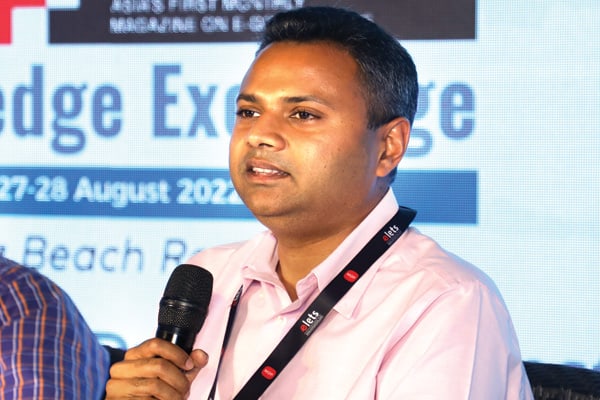
Lalit Jain, Director, Department of Environment, Science & Technology and Member Secretary, HIMCOSTE, Government of Himachal Pradesh
Talking about the impact of information technology, Lalit Jain, Director, Department of Environment, Science & Technology and Member Secretary, HIMCOSTE, Government of Himachal Pradesh said, “One thing which has brought the most disruption in the government is IT. There may be talk about changing laws, removing old laws, bringing various amendments in laws, but it is IT which has unleashed a great development vis-a- vis the governance.”
Jain talked about his time when he was the Director of Rural Development, Government of Himachal Pradesh. “Having to deal with over 300 villages where there is no connectivity of telephone and with COVID, I think we were saved primarily because of IT, as we were able to reach and convey our messages to the people and also hold video conferencing with the various stakeholders like the pradhans of the panchayats,” he said. “We could get their feedback, tell them what the government is doing. We held over 100 video conferences from our department. So that was the biggest impact which I saw,” he added.
Highlighting another initiative during COVID which became a great success, Jain said, “In every 15 days, we would fix to hear public grievances online. So we would float a zoom ID, which would be well publicised to everybody and any citizen of Himachal Pradesh could join that video conference and convey his grievances to us.”
Emphasising the importance of IT, Jain said, “When we talk about India, it is IT that has had the most important impact as far as governance and the growth and development of the country is concerned. It’s also true that for future years to come, it is going to be IT that is going to be the cheerleader.”
Talking about the future of technology, Jain said that there will be a time when everything will be done by AI, robotics. “Even physical things – managing a godown of a civil supply corporation will be by the use of robots, who are going to sort out the material and then deliver it,” he concluded.
Be a part of Elets Collaborative Initiatives. Join Us for Upcoming Events and explore business opportunities. Like us on Facebook , connect with us on LinkedIn and follow us on Twitter, Instagram.
"Exciting news! Elets technomedia is now on WhatsApp Channels Subscribe today by clicking the link and stay updated with the latest insights!" Click here!






